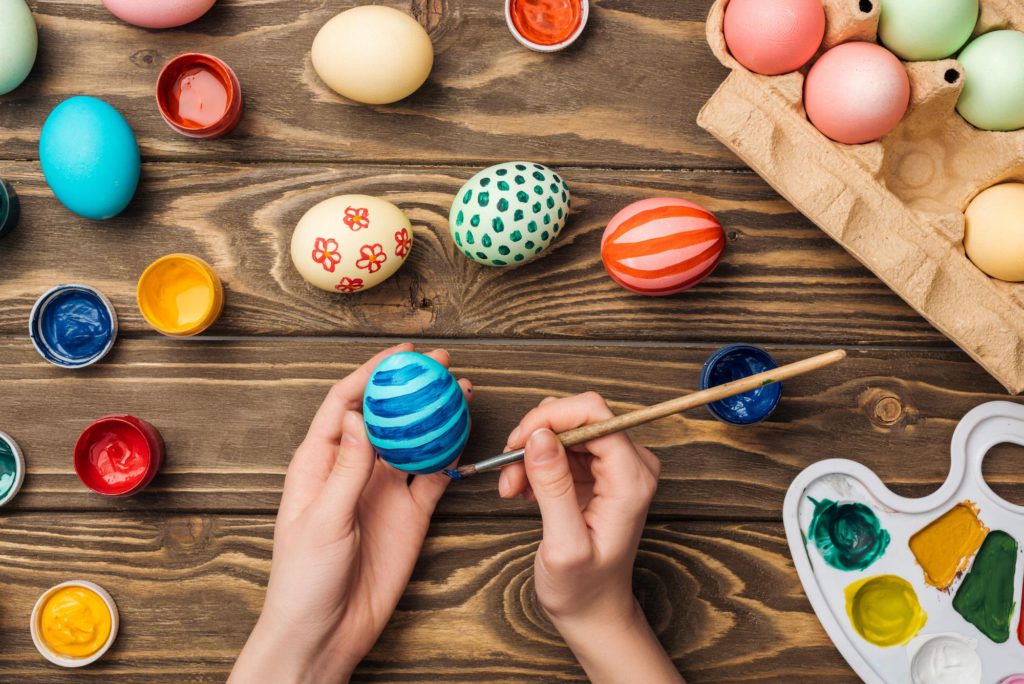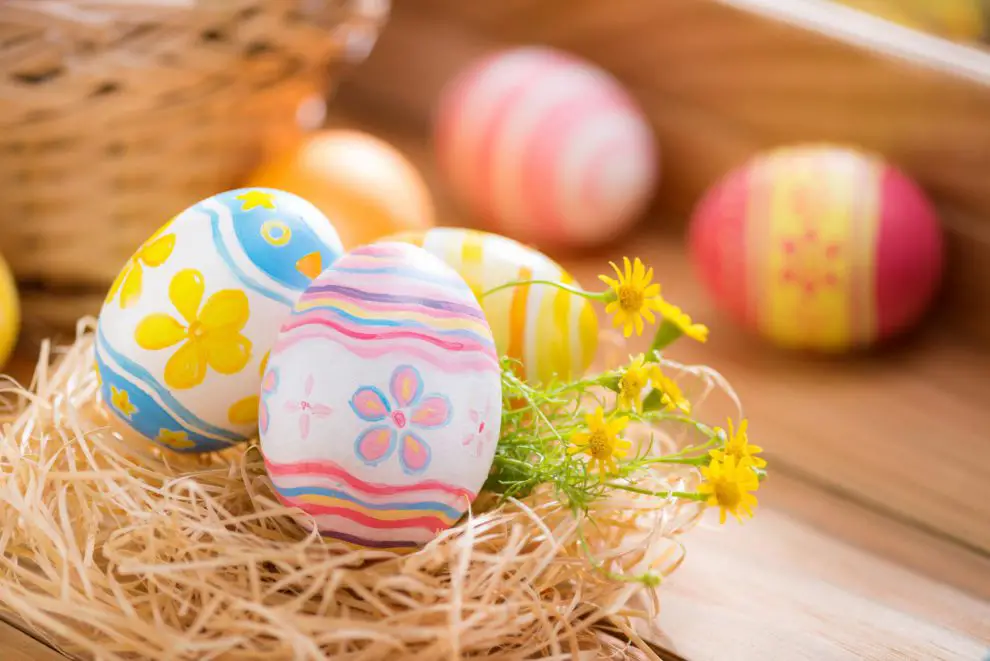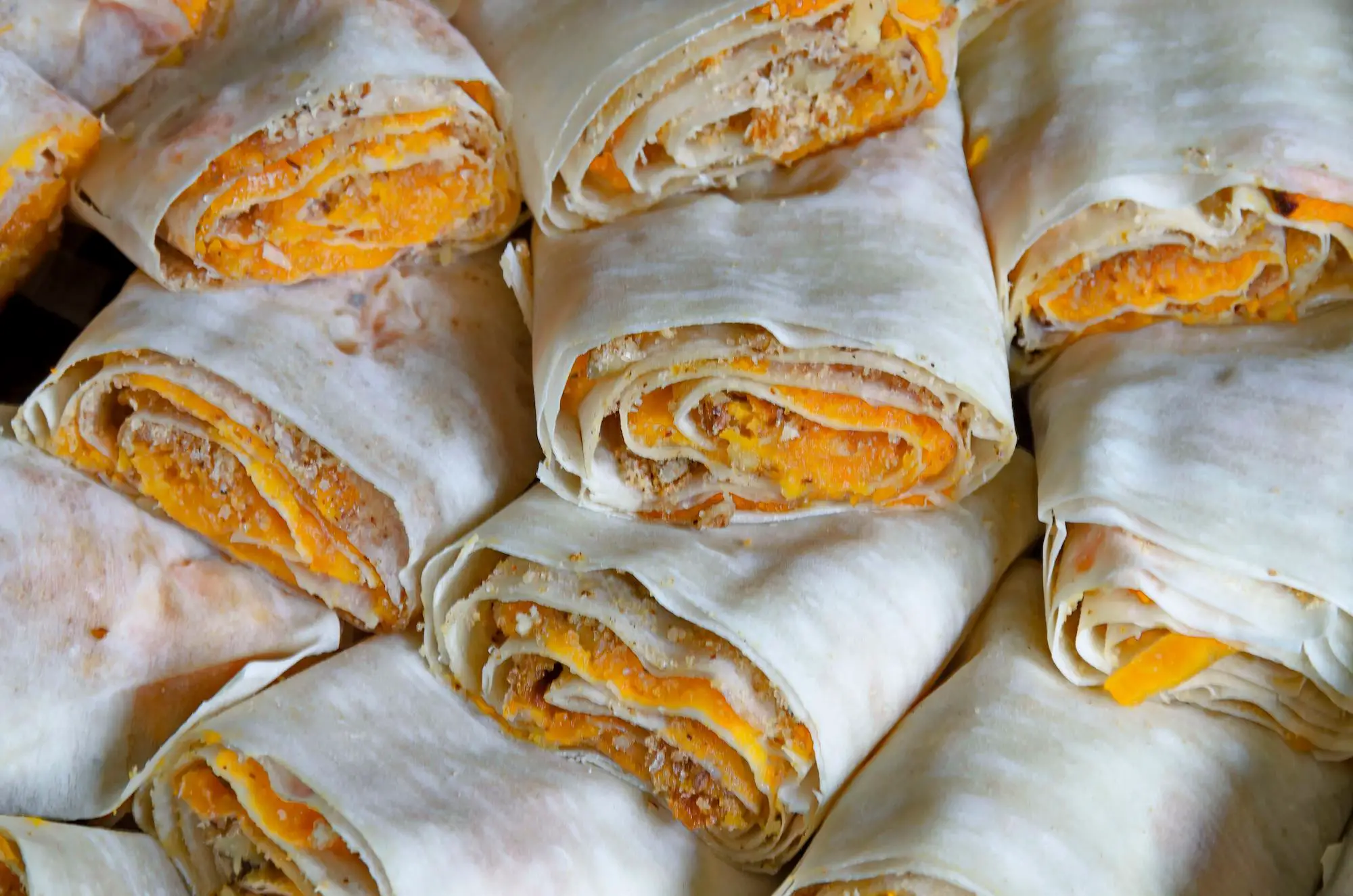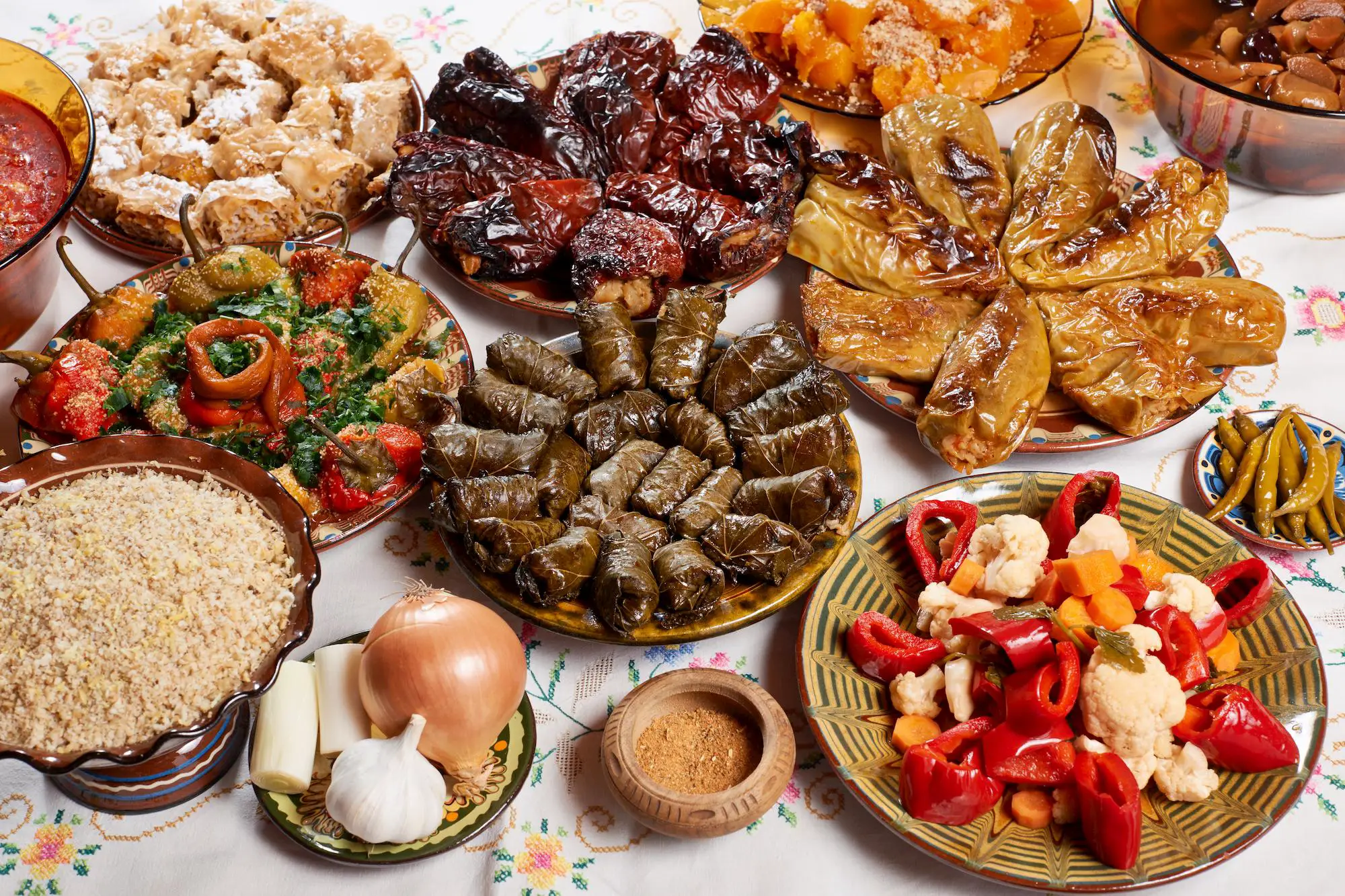The term pisanki usually refers to various types of lively decorated Polish Easter eggs. Every Easter, women across Poland use various techniques for coloring Easter eggs in as many colors as you can imagine!
Pisanki (Polish verb pisać, meaning to write or paint) has been part of Polish tradition for centuries. As in many other cultures, eggs are symbols of life and rebirth.
For at least one millennia (but probably much longer than that) women from Poland have kept the knowledge on how to decorate Easter eggs with wax. For generations, the techniques and designs changed, creating the amazing tradition Poland boasts about today.
In this article, you will read and learn everything there is to know about Polish Easter eggs, starting from the history and symbolism of pisanki, to different ways you can make them yourself. Read on and make sure you are ready for next Easter!
Table of Contents
History of Pisanki
No one knows when or where the first egg was decorated with wax, because this tradition is very old. Eggs are an archaic symbol, which scientists found in many cultures and different periods in history (ancient Egypt and China for example).
However, for some reason, Slavic cultures kept this tradition. Among them, Polish people are probably those who brought this art closest to perfection.
The oldest historical record of pisanki dates back to the Piast dynasty (the 10th century AD Poland). Archaeologists were able to find many remains of decorated pisanki eggs from that time, in medieval cities of Giecz, Ostrówek, and others.
In case you wonder how an Easter egg can survive underground for a thousand years, the answer is simple. Most of these eggs weren’t natural. Most of them were made of clay and limestone.
Although these medieval eggs (decorated in beautiful green and yellow colors) are very important findings, we don’t know much about who made them and why. We can only guess that based on the insights we have from contemporary traditions.
Pisanki Are Deeply Embedded In Polish Tradition
Ethnologists began scientific studies of pisanki in the 19th century.
It was a time when ethnographic science started developing in Poland, and there was a lot of public interest in traditional ways of life. Therefore, the earliest explorations of their meaning date from that period.
Today, the word pisanki indicates the many types of decorated Easter eggs that exist in Poland. Each of these pisanki types requires a special technique and method and is named differently in the Polish language.
Some of these methods are older. This is because women used natural ingredients for decorating the eggs. On the other hand, modern technologies changed everything, including decorating pisanki.
Traditionally, the preparations for decorating pisanki start as early as the beginning of the Great Lent. The last day to do it is Holy Friday.
The lent is a time of fasting, modesty, and spiritual purification, which means that the Easter eggs are imagined to be part of the same mindset. Therefore, pisanki eggs (with their colors and motifs) are artifacts of very high symbolic value for Polish households.
Women traditionally dye the Easter eggs. They don’t allow men to even enter the room. If they entered, women made them leave. This strict gender division probably comes from the traditional understanding of women as carriers of creation, life, and birth.
The melted wax method is definitely the most popular technique for decorating pisanki. Natural wax is not just the most convenient thing you can use for that type of egg decoration, wax is a ritual tool as well. It’s used in a lot of customs and rituals in Polish culture [1].
Pisanki DIY

And now, the fun part. How to make your home shine with pisanki eggs? Using the melted wax method is the most popular choice among Polish women, who prefer this method in almost every region of Poland.
In the follow-up, we will describe how pisanki are traditionally made in Poland (We will talk about the wax technique).
So, to make pisanki with wax and color dyes, Polish women use the following:
- Wax – usually the natural wax (not the soft wax used to make candles) as the boiling water will melt it too soon, leaving the egg without patterns.
- Writing tool – this can be a pencil with a straight pin pinned into the eraser, or a piece of wire coiled around any kind of thin wooden stick.
- Candle – making the fire for the wax to be melted.
- The dyes – women in Poland use either dye found in nature or bought in the store. In the first case, they use various berries, herbs, and vegetables (like beetroot, onions, or coffee).
The making of the eggs is a complex process that can take some time.
The women usually put the warm wax on the writing tool so that, when you bring the wax close to the candle, it melts and slides down, along with the pin/wire, and onto the surface of the egg.
It is best if the eggs are white (is this racist?).
Firstly, women draw with wax on the clean, white eggshell. Then, they put them in the first dye, which will color all of the surfaces except the one underneath the wax.
They then repeat the process, only this time the color underneath the wax will be the previous dye in which they put the egg in. In such a way, they achieve a colorful design specific to the natural wax method.
They will put eggs in several colors (they initially use lighter ones like yellow, and then the darker ones – blue or red).
Eggs Are Forever
In Poland, the word has it that an Easter egg can live forever. Luckily, for those who don’t wish to experiment, there is another way to prolong the life of a decorated egg.
Many Polish women thought it was too much trouble decorating pisanki with so much attention to let the kids break the precious shells in order to eat the egg. That is why they have a method of how to keep their art for years, without the egg spoiling.
They would blow out the egg and only decorate the shell. They did this by taking a raw, unboiled egg and piercing two very small holes on each tip (with a scalpel or a knife).
Once they managed to do it (using the thinnest toothpick available) they would pierce through the yolk. This helped remove the entire content of the egg faster.
Then, the next step was to blow through one of the holes, for the content to come through the other side.
Once removed, the women put some water inside the egg and blew it out again, to make sure the inside of the egg is clean and ready to go.
Many Forms of Pisanki
When most people say pisanki they instantly think of amazing Polish designs, painted on the eggs. However, most of them just remember the dyed eggs and colorful designs. They don’t notice the important differences in techniques.
Always in search of novel designs and techniques for decorating Easter eggs, Polish women created numerous methods to do just that.
Well, let’s dive into the diversity of Pisanki, starting from the most complex to the most modest. Who knows, you may find them on your next Easter trip to Poland!
Ażurki
Right at the top, the word Ażurki indicates probably the most unbelievable egg design you may find around the world.
Once the insides are removed, the patterns are actually tiny punctures, made in the shell using a special drill. This leaves the entire eggshell looking like a piece of the finest embroidery. One must be an expert to do that without breaking the shell.
Seeing these small art masterpieces, one could say that Polish women are definitely top experts when it comes to Easter egg decoration!
Dzierganki, Nalepianki and Oklejanki
Something is applied and glued on the shell when it comes to these eggs. In the case of Dzierganki, it is a piece of crochet. Nalepianki comes with colorful paper and for Oklejanki it is any dyed cord (a piece of rope, a plant stem, or something similar).
Malowanki
To put this in simple terms, these eggs are made by applying dye on the surface of the shell with a paintbrush. They are called malowanki because of the verb malować, which means to paint.
Drapanki
If a woman would decide to make some Drapanki, she would initially boil the eggs in the dye. Once removed, she would take a very tiny and sharp tool (like a needle or a scalpel) and scratch the dye off, thus making white patterns on the shell.
Pisanki
These eggs are the most popular ones and are made with the aforementioned technique of wax being melted for drawing. They are so popular that all the other types of painted and dyed Easter eggs in Poland are called the same, pisanki.
Kraszanki
Last but not least, we have Kraszanki eggs. When eggs have only one color on them, you know they are Kraszanki. They are plain and simple, but that means you can eat them right away when you see them on the table.
That is why they are the most common types of Easter eggs made in Poland.
Again, each region in Poland has some specific designs which can’t be found in any other region in the country.
Related posts
The Symbolics of Pisanki Art
If you read just a little bit about pisanki Easter eggs, you will immediately see how deeply their symbolics are rooted in ancient pagan images and beliefs.
Making pisanki eggs for Easter has many dimensions of meaning. One of them is colors.
In Polish culture, white stands for purity and innocence (precisely what Easter celebrates). On the other hand, red signifies love. Pink implies success, green wealth, blue strength and health, while black symbolizes the dead.
Usually, kids used to get the brighter colors as gifts, while elders would get the darker nuances. The purple was especially appreciated since it was rare [2].
Shapes are important as well. In order to understand patterns on pisanki Easter eggs, it is important to remember that they are part of traditions much older than Christianity.
The fact that in so many years since the arrival of Christianity, no missionaries ever managed to beat pisanki, tells us how popular and important this art was for Polish people in the past.
Dyed eggs were originally part of ancient spring equinox celebrations.
In that sense, the main motives on the eggs used to be solar, astral, or floral. When Christianity came to Poland, solar motives were changed into crosses.
You may also see some animal motifs (mostly small chicken or roosters) or widely known abstract shapes (like the heart).
In research conducted in villages around Lublin (a region in Eastern Poland) scientists found a rich heritage of pisanki egg motifs which are still in use today.
A pisanki egg from that region could have a swastika, rosette, or a triskelion (a shape looking like a Y letter reversed) [3].
Sometimes, a woman might write a short sentence or an Easter greeting on the egg. The patterns very often combine various motifs, forming the well-known diversity of pisanki design [4].
The Bottom Line
The amazing findings of pisanki eggs from the region of Eastern Poland are excellent proof of their ancient roots. Each symbol on a pisanki egg could tell us more about multiple layers of Polish culture.
Based on pisanki eggs, one of the layers is of course the old Slavic traditions, but symbols such as swastikas indicate the presence of even older traditions. One of them might originate in the archaic Proto-Indo-European cultures.
Who would say that a pisanki egg could be a result of such a long historical development? Research and scientists would, that’s who!
Sometimes, a pisanki egg is a gift for the closest relatives. In most cases, they are treasured at home, as examples of female art, dedication, and creativity. Apart from that, it is the symbol of life, spring, and fertility.
If you like Slavic folk design and are willing to dye an Easter egg with some more attention, then there is no better prototype than pisanki.
References
- https://holidappy.com/holidays/Polish-Easter-Traditions-From-Babka-To-Easter-Eggs
- https://sheilaingle.com/2020/03/28/pisanki-polish-easter-eggs/
- http://patternsofeurope.pl/traditional-design-of-the-lublin-region-popular-motifs/
- https://pgsa.org/wp-content/uploads/2015/03/EggsPisanki.pdf













